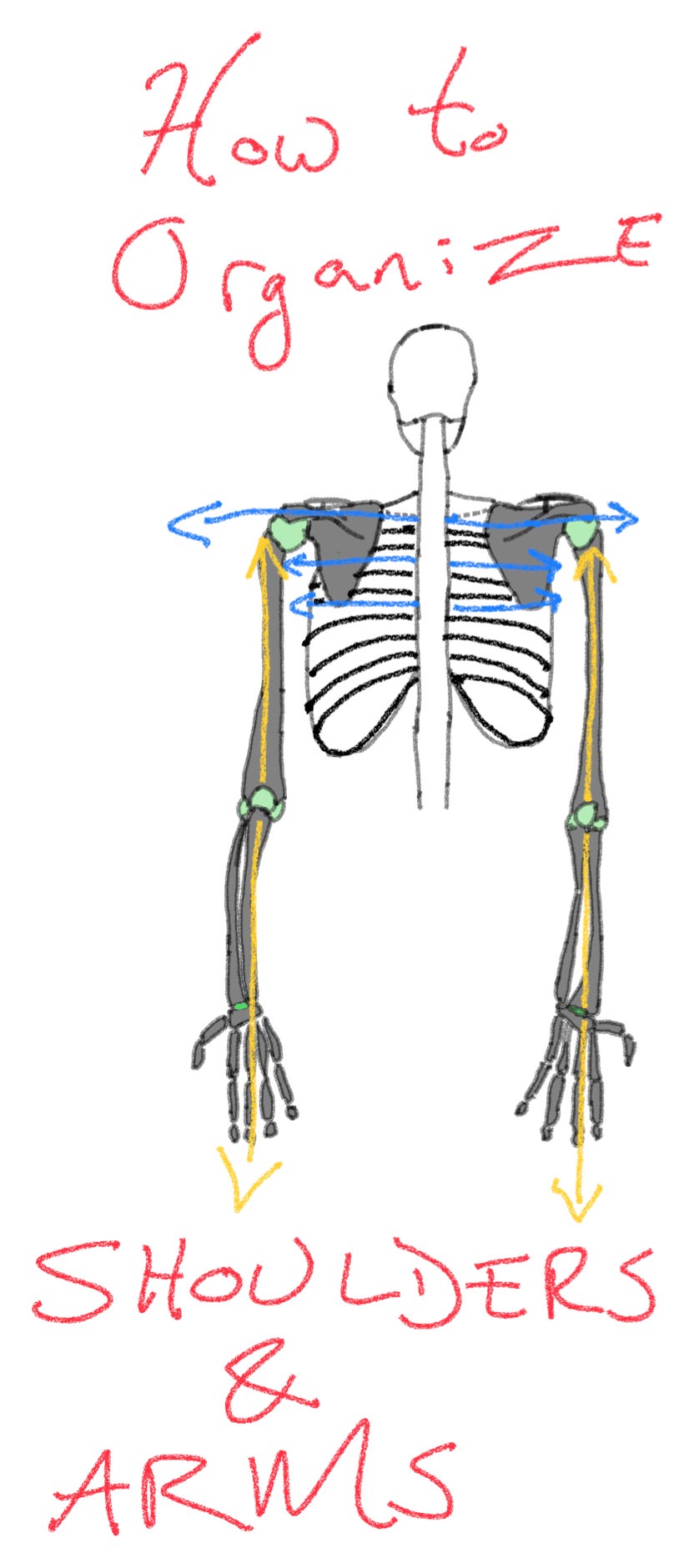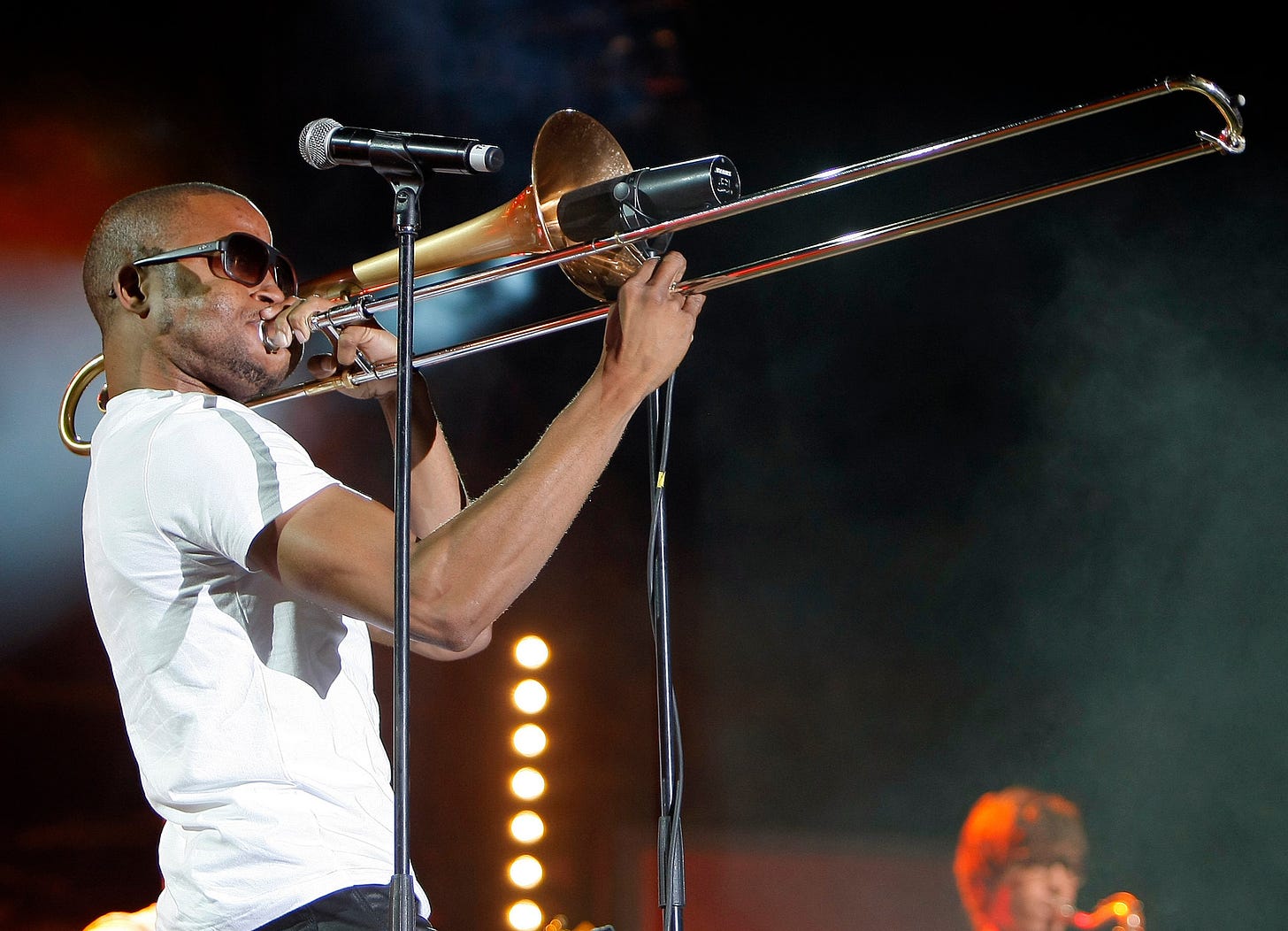Welcome to yet another week! I hope last week’s post on How to Organise was helpful. If you missed it, check it out! I dusted off ye olde iPad to make some rough sketches of the antagonistic pulls of the head, neck, back, and legs and I’ll continue with my amazing artistry to look at the shoulders and arms this week.
When we start looking at the shoulders and the arms, I’d like you to bear in mind that your sense of balance and overall ease must come first. You’ll never be able to jump straight into ‘fixing a shoulder’ without having some sense of your whole self. These diagrams are to help you tie together the information in the Opposition series I wrote (see the Table of Contents when in doubt!).**
But enough with the introductions! Let’s jump right into the drawing!
In the sketch above, I have drawn Opposition 3 and Opposition 4; ‘shoulders apart’ and ‘pull at the elbow’. Please note that both of these phrases lack the word DOWN. Nothing has a downward force. I’ve shaded in the bones of the arms and shoulders grey and highlighted the ligaments of the shoulder and elbows in green. You’ll also see some green bits in the hands to indicate that we don’t want to stiffen around these areas.
Shoulders Apart
The blue lines are drawn from the spine outward. Ideally, I would have drawn a front view to show you that the blue lines also extend from the sternum (breast bone) in an outward direction. I think it’s very important for you to realise that the front of your torso has an expansive quality AND that this quality occurs when you inhale and exhale. That is, the expansive quality of the ribs is NOT achieved by sucking in air and puffing out your chest.
What may not be readily apparent in this drawing is the direct connection of ‘Shoulders Apart’ to the neck. The neck muscles - for lack of a better term - act as a bridge between the head, neck, back, and the shoulders. It’s all intertwined. If you are going to have a sense of the shoulders going apart, you should know that the balancing of the neck and head are intimately involved in the release of the shoulders.
This is one of many reasons why it’s worth taking the time to explore the head, neck, and back relationship.
Pull at the Elbows
The yellow lines are drawn from the elbows in an outward fashion. This is a tricky one to explain because at first glance, you might think that I’m suggesting that the upper arm is pushing up into the shoulder and the lower arm is pushing down towards the ground. That is NOT what I’m intending to convey here!
The yellow lines are meant to convey what happens as you dissolve habitual stiff/dead weight from your arms. This could occur while the arms are resting by your side during a lie down or while they are engaged in an activity like walking or typing. There is no need to habitually hold tension in the hands OR to strike the keys of your keyboard with the force of 1,000 suns***.
The trick with describing the pull at the elbows is that if I draw your attention to the idea of softening the arms, there is a tremendous tendency to erroneously drop the shoulders into dead weight and push the shoulder girdle down. If this occurs, you will lose the overall sense of balance that is present when you organise smashingly well.
Instead, you may find success by noticing a supple quiet in the forearms while allowing the shoulders to be apart (all from a free neck of course). If you can manage that, you will notice a shift in the quality of weight in the upper arm as well. It will feel like your arm is growing…and in reality it will.
I think this phenomenon is intimately tied to the concept of Push Hands in Tai Chi, but I have little intention of digging into Tai Chi. I just know that it feels like your hands push away from your back without you doing any direct pushing. It’s the feeling that I need to wrap my hands around a saxophone without building tension in the arms or shoulders.
It all seems to occur on its own when I think: {(‘STOP’). (‘DISSOLVE’), (‘EXPAND‘)}.
Altogether Now
Altogether is really your friend when it comes to understanding these antagonistic pulls. The only reason I suggest looking at them in isolation is because I cannot convey the meaning of 2342 things simultaneously. If you attempt to perfect your understanding of any one of these things that I’ve mentioned, you will inevitably concentrate yourself and sacrifice some part of your balance; and I mean balance in the TOTAL sense of the word.
When in doubt, we simply want a total lack of compression.
** I’ll do my best to get a little book together to tie these thoughts up in a more concise way.
*** Note to Self.




